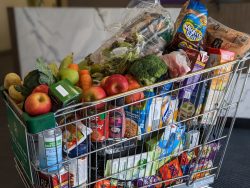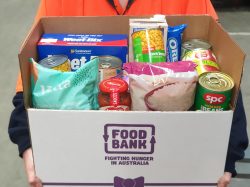A brighter future starts at home
It’s a stark statistic: 120,000 Western Australian children are living in homes struggling to afford food. At Foodbank WA we don’t just see the numbers – we see the faces behind them. Michelle is one of those faces. A single mum in Perth’s northern suburbs, she knows this daily struggle all too well:
Every time my lease came up for renewal, it felt like a gamble. Would I be able to find another place I could afford or would I end up homeless?”
Like many forced to prioritise rent over food, Michelle’s family felt the sharp sting of hunger and difficult choices. Thankfully, a glimmer of hope has emerged for Michelle and countless others like her. Recent rent reforms finally offer some stability.
These reforms are a critical step towards making housing a foundation for dignity, not a constant source of stress. But they’re just one piece of the puzzle. The reality is that even with stable housing, many families will still struggle to put food on the table because of inadequate income support. Here’s what welfare support services can do about it.
Rent reforms: a step in the right direction
For struggling families, these recent rent reforms are a lifeline. Capped annual increases and the ban on bidding wars provide much-needed stability, allowing them to breathe easier and plan for the future. Here’s what this means in real terms:
- Predictable costs: rents can only rise once a year, not every six months. This allows families to plan ahead and budget more effectively.
- Fair bidding: bidding wars are a thing of the past. Landlords must advertise properties with a fixed price, eliminating the stress and uncertainty of bidding wars.
- Pet security: Tenants with furry companions can breathe easier. They now have more rights regarding pets and minor modifications, making it easier to find a pet-friendly home.
The missing piece: income security
Anglicare’s 2024 Rental Affordability report paints a stark picture: with current payments, someone on JobSeeker can only afford three rentals in Australia. That’s three out of 45,000 listings nationally. Annual indexation did recently increase the JobSeeker payments – by 96 cents a day, for an increased total of six affordable rentals.
But it’s not just Anglicare. ACOSS reports that 60 per cent of households relying on JobSeeker live in poverty. This lack of income forces families to prioritise rent, leaving little to nothing for food.
Having good food available, no matter your circumstance, is a basic human right. But 388,000 Western Australian families were priced out of accessing food last year. Changing income support payments could have started to bridge the gap between haves and have nots. Poverty is a real thing in this two-speed economy of those who can and those who can’t afford it.
The power of adequate income support: a case study
The COVID-19 lockdowns in March 2020 triggered job losses and wage cuts, leading to a significant rise in poverty. Children were particularly impacted, with poverty rates rising from 16.2 per cent to 19 per cent.
However, the story doesn’t end there. When increased COVID income support, including boosted JobSeeker payments, was introduced in June 2020, it had a dramatic effect:
- Poverty rates fell sharply – dropping to 12 per cent overall and 13.7 per cent among children.
- Nearly 400,000 people (one-fifth of households relying on social security) were lifted out of poverty.
- More than half of JobSeeker recipients saw an escape from poverty.
- Private renter poverty rates plummeted from 20 per cent to just 6% per cent alleviating hardship for an additional 349,000 people.
These numbers clearly demonstrate the powerful impact of adequate income support on alleviating poverty, especially amongst the most vulnerable.
The true extent of hunger
Since the Coronavirus Supplement ended, the demand for food assistance at Foodbank WA has skyrocketed. In the very month it stopped, the number of people needing help jumped by 21 per cent. This surge hasn’t slowed down.
Here’s a snapshot of the growing need:
- April 2020: We provided food relief to an average of 227 households daily.
- April 2021: 326 households
- April 2022: 510 households
- April 2023: 712 households
- April 2024: 768 households
This translates to a near doubling in the number of families seeking food assistance since 2020. Year-on-year, the increase has more than tripled.
We know that only 24 per cent of food-insecure households actually seek help from formal services. This means the true extent of hunger in Western Australia is likely much higher.
A foundation for dignity
Rent reforms are a critical step towards dignity. For a secure future, we need a two-pronged approach: stable housing and adequate income support. We urge policymakers to consider the evidence and advocate for increased income support. Together, we can build a future where every Western Australian family has a safe place to call home and access to nutritious food, regardless of their circumstances.
 Contact us
Contact us Log in
Log in

